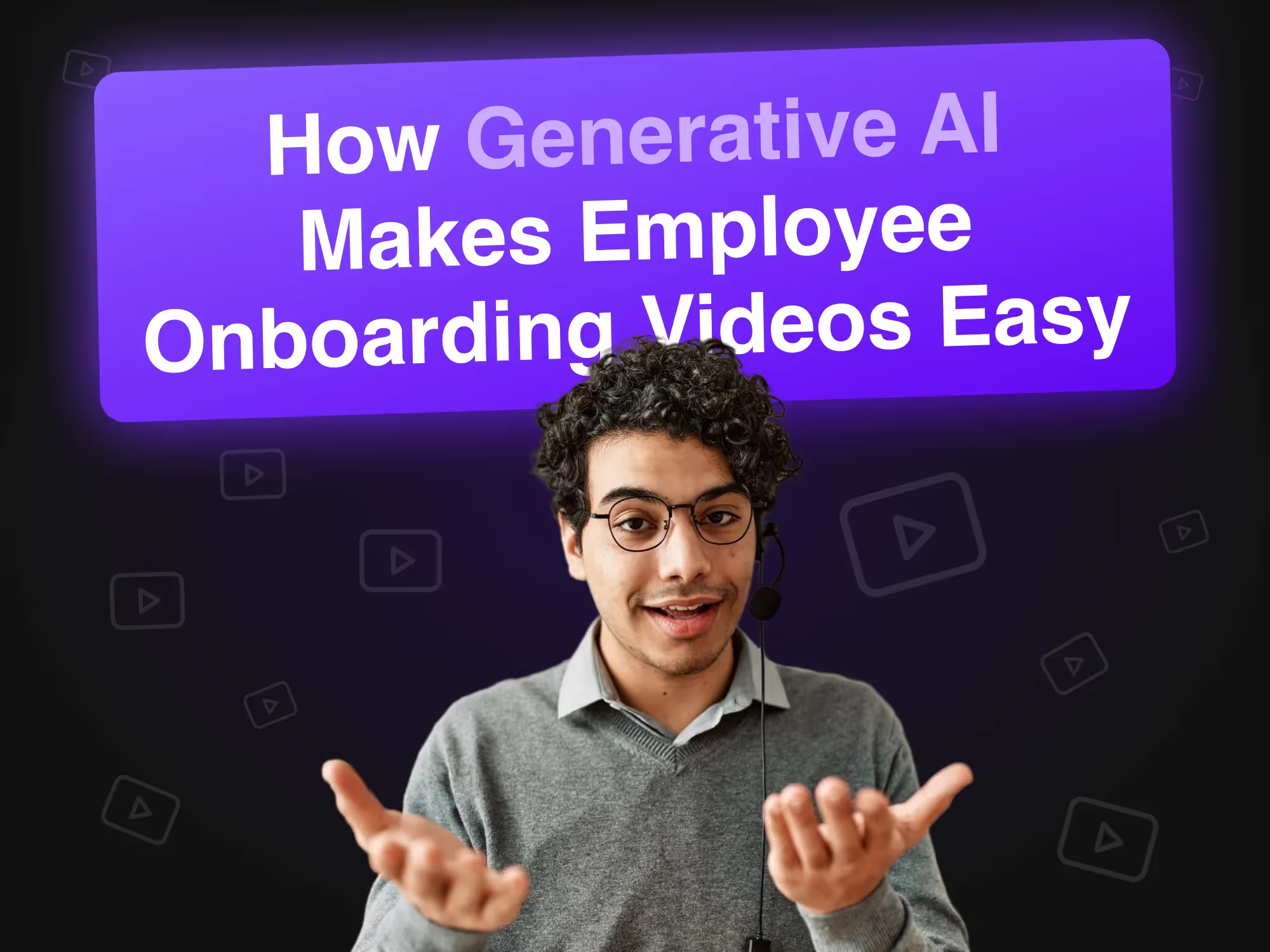As an HR professional, you know continuous training is a must if you want your employees to thrive. Everyone knows that happy, competent employees lead to a thriving company. Plus, employees who enjoy their work are more likely to stay with your company longer.
But providing training for your employees isn’t free. It involves time and effort and can be pricey, especially considering the costs of whole-day in-person training events.
Instead, with new technology popping up on the market daily, you and your HR team can create well-rounded training materials at a fraction of the cost of in-person training. In this post, we’ll dive into how much employee training cost and explore an alternative to in-person training methods.
(Trust us, you’ll want to add this alternative to your training catalogs ASAP!)
How Much Does it Cost to Train an Employee?
In 2023, the average cost to train an employee was $953 per employee. It doesn’t take much calculator work to learn that providing training for ten employees could easily reach well over ten thousand dollars. If you have one hundred employees on your payroll, you’re looking to spend nearly $100,000 just on employee training and development.
There are quite a few factors that determine employee training costs, such as:
- The size of your company and the number of participants
- Training and delivery methods
- Training schedule, such as duration and frequency of training
- Trainer fees
- Technology fees
- Certification and compliance requirements
Knowing what goes into employee training and development, plus the cost of training each individual employee, it’s no wonder corporate learning is a $340 billion industry.

Types of Employee Training
Depending on your industry, your employees may need to apply for and maintain certifications. Failing to receive certification could result in fines for your company, so it makes sense why certain industries make it a point to ensure their employee's certifications are active.
Employee certification isn’t the only type of employee training, though. Instead, you might offer your employees training courses on:
- Onboarding and Orientation: Employee onboarding and orientation help new employees get a feel for the company and set them up for success from Day 1.
- Technical training: Technical training can be a great way to refresh or learn new technical skills.
- Soft skills training: Continually improving soft skills can help your employees be better communicators and listeners— essential skills for a harmonious workplace.
- Compliance training: Compliance training is necessary. Depending on your industry, you may need to prove to regulatory boards that your employees have completed training courses. Typically, compliance training deals with health and safety regulations and sexual harassment reporting and prevention.
- Product training: If you plan to add a new technology to your workflow, you’ll want to train your employees on integrating the new software into their everyday tech stack. Failing to do so can cause tension in the workplace.
- Sales training: Sales can be a natural gift. However, for those employees who need a bit more help, sales training is the perfect way to brush up on their skills.
- DEI training: A diverse workforce can help position your company as a global leader in your industry. You’ll want to implement diversity, equity, and inclusion (DEI) training to navigate any missteps and ensure your workplace is a welcoming, inclusive environment.
There are plenty of training courses and topics you can offer your employees. Listing important training topics and creating a training program schedule is a great idea. Failure to provide your employees with learning opportunities can be a costly mistake.

The Hidden Costs of Bad Training
Like failing to provide your employees with training opportunities, bad training can be challenging.
Employees who undergo bad training might not receive the skills they need to do their jobs well. That means your team will spend more time and effort correcting mistakes in the long run, which can increase your employee training costs.
Plus, employees who are not equipped to do their jobs may become dissatisfied with the company and decide to look for employment elsewhere, leading to vacancies on your team and the need to onboard and train new employees.
To combat bad training, you and your HR team need to spend some time ensuring your training materials are effective and cover topics that your employees need the most. One way to ensure your employees get the most out of their training and development is by incorporating video training into your training schedule.
The Power of Video Training
While in-person training is effective, it’s often costly and inconvenient, especially if employee schedules do not align with the trainer's. That’s one reason video training is popular.

Video training is on-demand, meaning employees can access it anytime and complete their training modules at their convenience. Videos also allow employees to slow down or speed up the audio, which can help learners who need more time to process information.
Subtitles and captions can also be added to videos. Subtitles help make audio content more accessible, so employees who need them to supplement their audio processing are more likely to benefit from your training material.
Plus, if you want your employees to finish watching your videos, adding captions isn’t a bad idea. A joint study by Verizon and Publics Media found that 80% of viewers are more likely to finish a video if subtitles are present.
Factoring Video Training into Employee Training Costs
Depending on your training and development budget, producing your own video training materials effectively decreases your employee training cost. Considering the overall costs of employee training (remember, it costs an average of $954 a year per employee), a subscription to a video production tool is worth it. It makes scaling your training opportunities much more manageable.
Video production tools are often cost-effective and can be used by your learning and development leaders to create company-specific and branded training courses. This can make your onboarding videos and other training courses more personalized and engaging.

Video tools, like AKOOL, use AI and avatars to create videos, meaning you don’t need to hire anyone to be on camera. Nor do you need to set up an in-office recording studio. Instead, choose an avatar and a well-crafted prompt to create informative, engaging videos in as little as a few minutes. With the time saved using a tool like AKOOL, you and your team can create a well-rounded training catalog covering the topics your employees need to strengthen their skills.
Choose AKOOL to Lower Employee Training Costs
Training and development are necessary to ensure your employees are prepared to do their jobs well. However, employee training can quickly eat up your entire budget, especially if you have a large, diverse team with different needs and skill sets.
Using video production tools like AKOOL, you and your team can quickly create knowledge and industry-specific training materials for your employees without needing to hire a full-blown video production team. AKOOL can help reduce employee training cost while giving your team the creative freedom to generate and scale video training production.
If you’re ready to add a video production tool to your HR tech stack, try AKOOL today.









